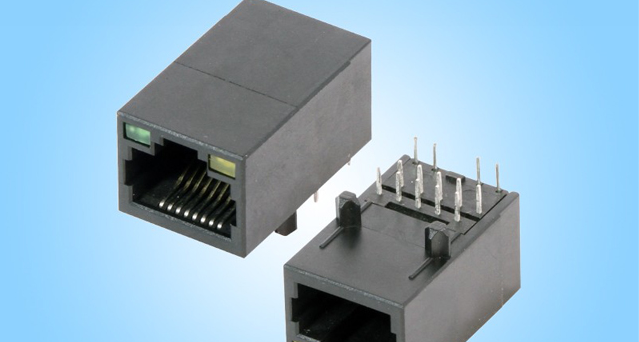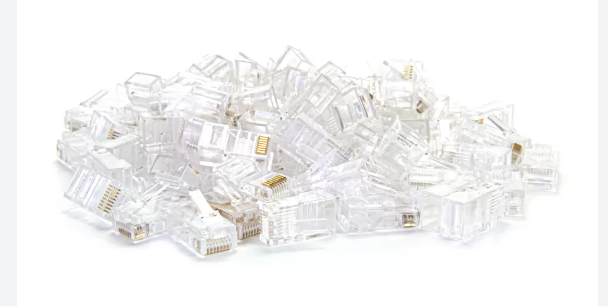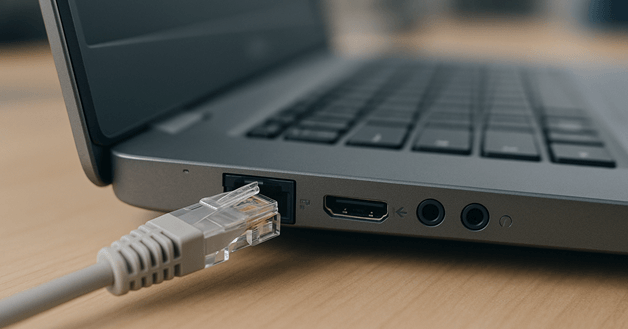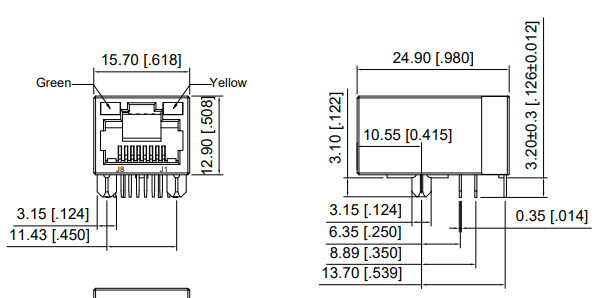In the world of wired networking, a reliable connection often comes down to the smallest components—and the RJ45 connector is one of the most essential. As the standard interface for Ethernet cabling, it enables high-speed data transmission, stable performance, and, in many cases, even power delivery through a single cable. Whether you’re building a home network, upgrading office infrastructure, or designing an industrial system, understanding the role and selection of RJ45 connectors can help you achieve better speed, reliability, and scalability.
An RJ45 connector is a standardized plug used to terminate Ethernet cables, following an 8P8C configuration—eight positions and eight electrical contacts—designed to carry four twisted pairs of copper wires. Its shell is typically made of high-strength plastic, and the contacts are often gold-plated to protect against corrosion and maintain signal integrity over years of use.
For a more detailed explanation of its structure, functions, and practical applications, you can read our complete RJ45 connector overview.
Although similar in appearance to the narrower RJ11 telephone plug, the RJ45 is engineered for high-speed, high-volume data transmission. Many modern versions also support Power over Ethernet (PoE), which allows one cable to carry both data and electrical power. For anyone planning a reliable wired network—whether in a home, office, or industrial facility—RJ45 connectors remain a critical building block. Boost network reliability with GLGNET RJ45 Connectors—achieve 50% less downtime and 30% better signal integrity for every connection.

Within Ethernet infrastructure, the RJ45 connector forms the physical bridge between devices such as desktop PCs, routers, network switches, and servers. Its precision contact design reduces resistance and signal loss, which is key to sustaining stable network performance.
In a small business, for example, each workstation might connect via Cat6 cables with RJ45 terminations to a central switch. This arrangement doesn’t just improve speed—it also reduces downtime, ensures smoother video meetings, and provides consistent access to shared resources. For decision-makers, this underscores why investing in wired connectivity can be essential for operations that can’t afford interruptions.

A Local Area Network (LAN) enables devices in the same building or campus to share files, printers, and applications without relying solely on the internet. RJ45 connectors ensure that these internal connections remain fast, secure, and scalable.
Take a university campus: hundreds of access points and lab computers can be connected to the network core through structured cabling with RJ45 terminations. This wired backbone not only supports heavy data loads from research labs and lecture halls but also guarantees reliability for security monitoring and library databases. For IT planners, this means RJ45-based wiring is a future-proof investment that can handle both current and anticipated network demands.
When used with advanced cable types such as Cat6 or Cat6a, RJ45 connectors can support transfer speeds up to 10 Gbps—enough for bandwidth-heavy, low-latency applications.
In a video production house, for instance, editors often work with uncompressed 4K or even 8K footage stored on centralized servers. RJ45-based cabling allows this data to be accessed instantly, eliminating the delays caused by downloads or buffering. For businesses in media, design, or engineering, this demonstrates how the right cabling choice directly impacts productivity and project turnaround times.

While Ethernet networking is the most visible use case, RJ45 connectors also serve critical roles in other industries:
Telecommunications – Linking VoIP phones to a network for crystal-clear, low-latency calls.
Industrial Automation – Connecting PLCs and sensors to control systems for real-time monitoring and precision adjustments.
Audio/Video Systems – Powering HDBaseT setups that carry high-resolution video, audio, and control signals through a single Ethernet cable.
In modern manufacturing facilities, RJ45 connections integrate robotic arms, conveyor belt sensors, and quality inspection cameras into one coordinated control system. This centralized setup enables automated fine-tuning of production, improving efficiency and reducing waste. For engineers, it highlights the connector’s versatility in both data and operational control environments.
The enduring popularity of the RJ45 jack connector comes from its broad compatibility, durability, and multifunctionality. It works with multiple Ethernet cable categories, making upgrades straightforward. Its robust design can endure thousands of insertions without degradation, and PoE capability enables simultaneous data and power delivery—reducing the need for separate wiring.
In a smart building, RJ45 connectors might supply both electricity and connectivity to security cameras, access control panels, and wireless access points. This dual-purpose capability simplifies installations, lowers material costs, and allows network expansions without major rewiring. For project managers, this translates into lower capital expenditure and easier long-term maintenance.

Understanding what RJ45 jack connectors do and where they excel can directly influence network design choices, equipment purchases, and long-term infrastructure planning. Whether you’re upgrading an office network, deploying campus-wide Wi-Fi backbones, or integrating smart building systems, the RJ45 connector remains one of the most cost-effective and future-ready options for reliable, high-speed wired connectivity.
Selecting the right RJ45 connector is less about picking the first one you find and more about ensuring it fits your cable type, installation conditions, and future network plans. A well-matched connector not only improves performance but also extends the life of your cabling. Here are key factors to keep in mind:
Align with Your Cable Category – Choose a connector that matches the exact rating of your cable, whether it’s Cat5e, Cat6, Cat6a, or Cat7. Using a lower-grade connector on a higher-rated cable can create a performance bottleneck and waste the cable’s potential.

Consider Shielding Needs – In environments with significant electrical noise—such as manufacturing floors or large data rooms—shielded connectors (STP) help protect against interference. In low-interference spaces like most homes and small offices, unshielded connectors (UTP) are usually sufficient and more budget-friendly.
Match to the Cable’s Internal Design – Solid-core cables are generally used for fixed, in-wall wiring, while stranded cables are more flexible and better suited for patch cords. Select a connector built specifically for the cable’s construction to ensure a secure crimp.
Pass-Through or Standard Design – Pass-through connectors let the wires extend out the front before crimping, which can simplify assembly and help ensure correct wiring order. Standard connectors are more compact and work well if you’re confident in your termination skills.
Check PoE Readiness – If your network will supply power to devices such as IP cameras, Wi-Fi access points, or VoIP phones, make sure the connector is rated for Power over Ethernet. This ensures it can safely deliver both power and data without overheating or signal loss.
Look for Durability Features – For connections that will be plugged and unplugged frequently, opt for connectors with reinforced locking tabs or snagless boots. These features reduce wear and help prevent accidental damage during handling.
By matching the rj45 jack connector to your cable type, installation environment, and application needs, you’ll achieve optimal network performance, reduce maintenance issues, and ensure a more reliable setup for years to come.
https://www.glgnet.biz/articledetail/how-to-wire-an-rj45-connector.html
https://www.glgnet.biz/articledetail/are-rj45-connectors-the-same-for-cat5-and-cat6.html
Conclusion
From home offices to large-scale industrial facilities, the RJ45 connector has proven to be a versatile, durable, and future-ready choice for wired communication.